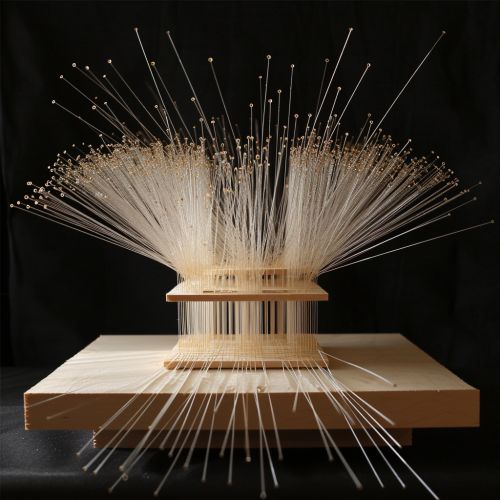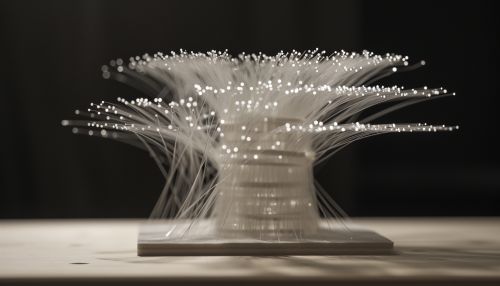Fiber Bundle
Introduction
A fiber bundle is a significant concept in the field of topology, particularly in its application to differential geometry and gauge theory. It provides a formal structure that allows mathematicians and physicists to describe and analyze a wide range of physical phenomena, from the behavior of subatomic particles to the curvature of the universe.
Definition
In mathematical terms, a fiber bundle is a triple (E, B, π), where E, B are topological spaces and π : E → B is a continuous surjection satisfying a local triviality condition. This means that for every x in B, there is an open neighborhood U such that π^−1(U) is homeomorphic to the product space U × F, where F is the fiber over x.
Structure
The structure of a fiber bundle is determined by three main components: the total space (E), the base space (B), and the fiber (F). The total space is the set of all points in the bundle, while the base space is a topological space that serves as the 'foundation' for the bundle. The fiber is a topological space that is 'attached' to each point in the base space.


Types of Fiber Bundles
There are several types of fiber bundles, each with its unique properties and applications. These include vector bundles, principal bundles, and tangent bundles.
Vector Bundles
A vector bundle is a fiber bundle whose fibers are vector spaces. Each point in the base space is associated with a vector space, and the bundle is equipped with a continuous operation of vector addition and scalar multiplication.
Principal Bundles
A principal bundle is a fiber bundle equipped with a continuous action of a Lie group that preserves the fibers. It serves as the mathematical foundation for the formulation of gauge theories in physics.
Tangent Bundles
A tangent bundle is a specific type of vector bundle that is associated with a differentiable manifold. The fiber over each point in the manifold is the tangent space at that point.
Applications
Fiber bundles have found extensive applications in various fields of mathematics and physics.
Differential Geometry
In differential geometry, fiber bundles, particularly tangent bundles and cotangent bundles, are used to define vector fields and differential forms.
Gauge Theory
In gauge theory, principal bundles are used to describe the mathematical framework of gauge fields, including the electromagnetic field and the fields of the standard model of particle physics.
Topology
In topology, fiber bundles are used to study the properties of spaces by decomposing them into simpler ones. They play a crucial role in the theory of characteristic classes.
